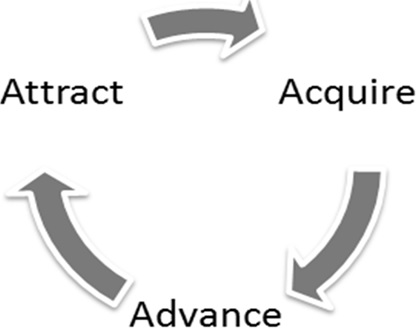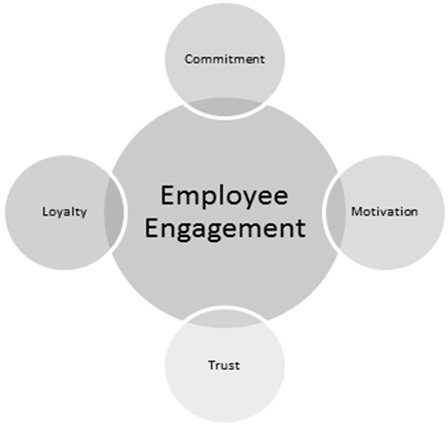
- Employee Engagement - Home
- Introduction
- Employee Engagement - Types
- Steps for Success
- Employee Engagement - The 10 C's
- Employee Engagement - Process
- Employee Engagement - Phases
- Employee Engagement - Strategies
- How to Engage Women Employees?
- Employee Engagement - Drivers
- How to Meaure?
- Effective Methods
- Management Role
- Employee Engagement - Activities
- Employee Engagement - Benefits
- Problems of Disengagement
Employee Engagement - Phases
Employee Engagement is a long-term process and goes through various phases describing the level of the engagement, involvement, attachment and belongingness between employee and employer. These phases of employee engagement make a continuous cycle that each organization which is aiming to achieve increased profitability must undertake.
Those employees who do not understand what they contribute towards the success of their organization will not stick to it for long. They would rather consider leaving in a few months or years as and when they are offered a high-paying job.
The following image shows the main phases of an employee engagement cycle where preparation is done much before an employee joins the organization.

The Attract Phase
The first phase of the employee engagement cycle is attracting the best talent from the industry. This phase involves creating a positive impression about the work culture and employee career as a potential employer.
The Acquire Phase
The acquire phase involves more than one aspect. It includes −
- The way these potential candidates are interacted while advertising a position.
- Keeping the promises that were made while hiring them.
- Providing the new joiners, a right kind of work culture.
The Advance Phase
Continuous moving of the talent is the last but an unending phase. It not only involves promoting the employees to a higher designation along with salary increments, but also growing them in other tangible and intangible ways.
As mentioned earlier, employee engagement is not only about attracting, acquiring, and retaining the best talent but also advancing their experience and personality.
Elements of Employee Engagement
The term Employee Engagement has been defined by various researchers. A commonly agreed upon definition of employee engagement would be physical, psychological or emotional involvement of the employee while at work.
Four things are important when we talk about Employee Engagement, which are −
- Commitment
- Motivation
- Loyalty
- Trust
All these elements play a vital role in determining the fate of an organization. Besides this, twoway communication to discuss challenges, potential consequences, vision and values and organizations future should be established. In fact, communication is the backbone of any organization without which it cannot survive for long.

Apart from this, organizational culture, a well-established and duly followed reward system including compensation, benefits, stock exchange options and recognition and personal growth and satisfaction of employees are also important factors in improving the levels of employee engagement.